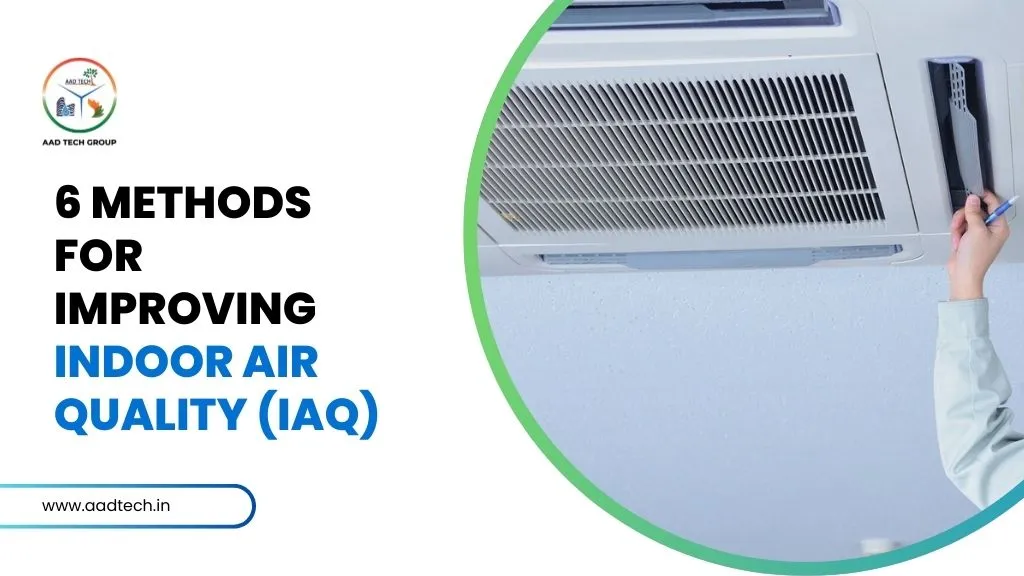Indoor air quality (IAQ) is essential in ensuring a healthy, comfortable, and productive indoor climate for offices, hospitals, industrial buildings, or commercial settings. Poor indoor air quality not only contributes to the deterioration of employee health and well-being but also to reduced productivity, equipment lifespan, and industry compliance. To address this challenge, most businesses are seeking innovative solutions and specialized services from industry experts such as AAD Tech, who specialize in HVAC system optimization and cleanroom environments.
The following are six efficient ways of enhancing Indoor Air Quality that can revolutionize your building environment.
1. Upgrade Air Handling Units (AHUs)
The Air Handling Unit (AHU) is the centerpiece of any HVAC system, charged with moving, cleaning, and conditioning air. An old AHU might not be able to remove airborne contaminants from the air or manage humidity well, and thus contribute to poor IAQ.
Replacement or retrofitting AHUs with high-efficiency filters (like HEPA or MERV-rated filters) guarantees removal of fine particles, allergens, and microbial impurities. Using EC fan technology enhances the control of airflow and lowers energy usage while improving air distribution. Specialized suppliers such as AAD Tech provide bespoke AHU solutions that address the specific air quality needs of various industries.
2. Install High-Efficiency Filtration Systems
Filtration is among the most straightforward methods of enhancing IAQ. Placing high-efficiency filters in the HVAC system traps dust, pollen, mold spores, and other airborne pollutants before they are circulated in indoor areas.
- HEPA Filters are ideal for areas demanding very high air cleanliness, like hospitals or cleanrooms used in the pharmaceutical industry.
- Activated Carbon Filters assist in removing volatile organic compounds (VOCs) and odors.
Periodic replacement of filters as per manufacturer instructions is essential to ensure efficiency.
3. Implement Controlled Ventilation Systems
Ventilation is essential to keep air fresh indoors while diluting contaminants and managing humidity. Rather than trusting completely on passive air exchange, current systems employ controlled mechanical ventilation with heat recovery.
These systems introduce filtered fresh air while pushing out stale air, capturing energy in the process. Not only does this enhance IAQ, but it also minimizes energy consumption by restricting reheat or cooling of incoming air.
4. Optimize Humidity Levels
Humidity control has a direct influence on IAQ. High humidity encourages mold growth, whereas too dry air causes respiratory irritation and static buildup.
- Optimal indoor humidity is usually in the range of 40–60%.
- Operating humidifiers or dehumidifiers as part of the HVAC system keeps these levels in check.
- High-tech systems by companies such as AAD Tech utilize smart sensors to detect and balance humidity in real time, enhancing comfort and inhibiting microbial growth.
5. Proper Maintenance and Cleanliness of HVAC Systems
An unmaintained HVAC system can end up being one of the biggest contributors to indoor pollution through dust accumulation, microbial growth in ducts, and failed components.
- Routine professional visits ensure that fans, ducts, filters, and coils are clean and operational.
- Duct cleaning eliminates settled dust and avoids clogging.
- Preventive maintenance avoids the potential for mold development or mechanical breakdown, leading to improved IAQ and system life.
6. Utilize Air Purifiers in Critical Areas
In spaces with particularly sensitive needs, hospitals, laboratories, or food processing facilities, individual air purifiers can be an auxiliary addition to the primary HVAC system.
High-tech air cleaners with HEPA, UV sterilization, and activated carbon filters offer focused cleaning where air movement might not reach in an effective manner. Such units are especially beneficial in busy spaces or rooms where airborne contaminants are likely to find their way.
Conclusion
Better Indoor Air Quality is not merely about comfort; it’s critical to health, compliance, and operational efficiency. The key is to integrate strategies like replacing AHUs, adding high-efficiency filters, ventilation control, and humidity maintenance for a complete solution to IAQ issues.
With specialized solutions from industry leaders such as AAD Tech, companies can deploy customized strategies that optimize air quality, energy efficiency, and reliability. From retrofitting an existing system or designing a new one, investing in IAQ promises a healthier and more productive working and customer environment.

